- Home
- Peter Ackroyd
London Page 4
London Read online
Page 4
The narrative of Brutus has been dismissed as mere fable and fanciful legend but, as Milton wrote in the judicious introduction to his own history, “oft-times relations heertofore accounted fabulous have bin after found to contain in them many foot-steps, and reliques of something true.” Some scholars believe that we can date the wanderings of the apparently legendary Brutus to the period around 1100 BC. In contemporary historiographical terms this marks the period of the Late Bronze Age when new bands or tribes of settlers occupied the area around London; they constructed large defensive enclosures and maintained an heroic life of mead-halls, ring-giving and furious fighting which found expression in later legends. Segmented glass beads, like those of Troy, have been discovered in England. In the waters of the Thames was found a black two-handled cup; its provenance lies in Asia Minor, with an approximate date of 900 BC. So there is some indication of trade between western Europe and the eastern Mediterranean, and there is every reason to suppose that Phrygian or later Phoenician merchants reached the shores of Albion and sailed into the market of London.
Material evidence of an association with Troy itself, and with the region of Asia Minor in which that ancient doomed city resided, can be found elsewhere. Diogenes Laertius identified the Celts with the Chaldees of Assyria; indeed the famous British motif comprising the lion and the unicorn may be of Chaldean origin. Caesar noted, with some surprise, that the Druids made use of Greek letters. In the Welsh Triads there is a description of an invading tribe who have travelled to the shores of Albion, or England, from the region of Constantinople. It is suggestive, perhaps, that the Franks and Gauls also claimed Trojan ancestry. Although it is not altogether out of the question that a tribe from the region of fallen Troy migrated to western Europe, it is more likely, perhaps, that the Celtic people themselves had their origins in the eastern Mediterranean. The legend of London, as a new Troy, is therefore still able to claim some adherents.
At the beginning of any civilisation there are fables and legends; only at the end are they proved to be accurate.
One token of Brutus and his Trojan fleet may still remain. If you walk east down Cannon Street, on the other side from the railway station, you will find an iron grille set within the Bank of China. It protects a niche upon which has been placed a stone roughly two feet in height, bearing a faint groove mark upon its top. This is London Stone. For many centuries it was popularly believed to be the stone of Brutus, brought by him as a deity. “So long as the stone of Brutus is safe,” ran one city proverb, “so long shall London flourish.” Certainly the stone is of great antiquity; the first reference to it was discovered by John Stow in a “fair written Gospel book” once belonging to Ethelstone, an early tenth-century king of the West Saxons, where certain lands and rents are “described to lie near unto London stone.” According to the Victorian County History it originally marked the very centre of the old city, but in 1742 was taken from the middle of Cannon Street and placed within the fabric of St. Swithin’s Church opposite. There it remained until the Second World War; although a German bomb entirely destroyed the church in 1941, London Stone remained intact. It is constructed of oolite which, as a perishable stone, cannot be assumed to have survived since prehistoric times. Yet it has been granted a charmed life.
There is a verse by the fifteenth-century poet, Fabyan, which celebrates the religious significance of a stone so pure that “though some have it thrette … Yet hurte had none.” Its actual significance, however, remains unclear. Some antiquaries have considered it to be a token of civic assembly, connected with the repayment of debts, while others believe it to be a Roman milliarium or milestone. Christopher Wren argued, however, that it possessed too large a foundation for the latter purpose. A judicial role is more likely. In a now forgotten play of 1589, Pasquill and Marfarius, a character remarks: “Set up this bill at London Stone. Let it be doone sollemly with drom and trumpet” and then again “If it please them these dark winter nights to stikke uppe their papers uppon London Stone.” That it became a highly venerated object is not in doubt. William Blake was convinced that it marked the site of Druid executions, whose sacrificial victims “groan’d aloud on London Stone,” but its uses were perhaps less melancholy.
When the popular rebel Jack Cade stormed London in 1450, he and his followers made their way to the Stone; he touched it with his sword and then exclaimed: “Now is Mortimer”—this was the name he had assumed—“lord of this city!” The first mayor of London, in the late twelfth century, was Henry Fitz-Ailwin de Londonestone. It seems likely, therefore, that this ancient object came somehow to represent the power and authority of the city.
It sits now, blackened and disregarded, by the side of a busy thoroughfare; over and around it have flowed wooden carts, carriages, sedan chairs, hansom cabs, cabriolets, hackney cabs, omnibuses, bicycles, trams and cars. It was once London’s guardian spirit, and perhaps it is still.
It is at least a material remnant from all the ancient legends of London and of its foundation. For the Celtic people these narratives comprised the glory of a city once known as “Cockaigne.” In this place of wealth and delight the traveller might find riches and blessed happiness. This is the myth that established the context for later legends, such as those of Dick Whittington, as well as those unattributable proverbs which describe London’s streets as “paved with gold.” Yet London gold has proved more perishable than London Stone.
CHAPTER 2
The Stones
A section of the original London Wall, with medieval additions, can still be seen by Trinity Place just north of the Tower of London; part of the Tower itself was incorporated within the fabric of the wall, demonstrating in material form William Dunbar’s claim that “Stony be thy wallys that about thee standis.” It was almost ten feet wide at its base, and more than twenty feet in height; besides these relics of the wall by Trinity Place can be seen the stone outline of an inner tower which contained a wooden staircase leading to a parapet which looked east across the marshes.
From here the spectral wall, the wall as once it was, can be traversed in the imagination. It proceeds north to Cooper’s Row, where a section can still be seen in the courtyard of an empty building; it rises from a car park in the basement. It goes through the concrete and marble of the building, then on through the brick and iron of the Fenchurch Street Station viaduct until an extant section rises again in America Square. It is concealed within the basement of a modern building which itself has parapets, turrets and square towers; a strip of glazed red tiling bears more than a passing resemblance to the courses of flat red tiles placed in the ancient Roman structure. For a moment it is known as Crosswall and passes through the headquarters of a company named Equitas. It moves through Vine Street (in the car park at No. 35 is a security camera on the ancient line of the now invisible wall), towards Jewry Street, which itself follows the line of the wall almost exactly until it meets Aldgate; all the buildings here can be said to comprise a new wall, separating west from east. We find Centurion House and Boots, the chemist.
The steps of the subway at Aldgate lead down to a level which was once that of late medieval London but we follow the wall down Duke’s Place and into Bevis Marks; near the intersection of these two thoroughfares there is now part of that “ring of steel” which is designed once more to protect the city. On a sixteenth-century map Bevis Marks was aligned to the course of the wall, and it is so still; the pattern of the streets here has been unchanged for many hundreds of years. Even the lanes, such as Heneage Lane, remain. At the corner of Bevis Marks and St. Mary Axe rises a building of white marble with massive vertical windows; a great golden eagle can be seen above its entrance, as if it were part of some imperial standard. Security cameras once more trace the line of the wall, as it leads down Camomile Street towards Bishopsgate and Wormwood Street.
It drops beneath the churchyard of St. Botolph’s, behind a building faced with white stone and curtain-walling of dark glass, but then fragments of it arise beside the
church of All Hallows-on-the-Wall, which has been built, in the ancient fashion, to protect and bless these defences. The modern thoroughfare here becomes known, at last, as London Wall. A tower like a postern of brown stone rises above 85 London Wall, very close to the spot where a fourth-century bastion was only recently found, but the line of the wall from Blomfield Street to Moorgate largely comprises late nineteenth-century office accommodation. Bethlehem Hospital, or Bedlam, was once built against the north side of the wall; but that, too, has disappeared. Yet it is impossible not to feel the presence or force of the wall as you walk down this straightened thoroughfare which can be dated to the later period of the Roman occupation. A new London Wall then opens up after Moorgate, built over the ruins of the Second World War. The bombs themselves effectively uncovered long-buried remnants of the ancient wall, and stretches both of Roman and medieval origin can still be seen covered with grass and moss. But these old stones are flanked by the glittering marble and polished stone of the new buildings that dominate the city.
Around the site of the great Roman fort, at the north-west angle of the wall, there now arise these new fortresses and towers: Roman House, Britannic Tower, City Tower, Alban Gate (which by the slightest substitution might be renamed Albion Gate) and the concrete and granite towers of the Barbican which have once more brought a sublime bareness and brutality to that area where the Roman legions were sequestered. Even the walkways of this great expanse are approximately the same height as the parapets of the old city wall.
The wall then turns south, and long sections of it can still be seen on the western side sloping down towards Aldersgate. For most of its course from Aldersgate to Newgate and then to Ludgate, it remains invisible, but there are suggestive tokens of its progress. The great beast of classical antiquity, the Minotaur, has been sculpted just to its north in Postman’s Park. The mottled and darkened blocks of the Sessions House beside the Old Bailey still mark the outer perimeter of the wall’s defences, and in Amen Court a later wall looking on the back of the Old Bailey is like some revenant of brick and mortar. From the rear of St. Martin’s Ludgate we cross Ludgate Hill, enter Pilgrim Street and walk beside Pageantmaster Court, where now the lines of the City Thames Link parallel those once made by the swiftly moving River Fleet, until we reach the edge of the water where the wall once abruptly stopped.
The wall enclosed an area of some 330 acres. To walk its perimeter would have taken approximately one hour, and the modern pedestrian will be able to cover the route in the same time. The streets beside it are still navigable and, in fact, the larger part of the wall itself was not demolished until 1760. Until that time the city had the appearance of a fortress, and in the sagas of Iceland it was known as Lundunaborg, “London Fort.” It was continually being rebuilt, as if the integrity and identity of the city itself depended upon the survival of this ancient stone fabric; churches were erected beside it, and hermits guarded its gates. Those with more secular preoccupations built houses, or wooden huts, against it so that everywhere you could see (and perhaps smell) the peculiar combination of rotten wood and mildewed stone. A contemporary equivalent may be seen in the old brick arches of nineteenth-century railways being used as shops and garages.
Even after its demolition the wall still lived; its stone sides were incorporated into churches or other public buildings. One section in Cooper’s Row was used to line the vaults of a bonded warehouse while, above ground, its course was used as a foundation for houses. The late eighteenth-century Crescent by America Square, designed by George Dance the Younger in the 1770s, for example, is established upon the ancient line of the wall. So later houses dance upon the ruins of the old city. Fragments and remnants of the wall were continually being rediscovered in the nineteenth and twentieth centuries, when the succeeding phases of its existence were first seen steadily and as a whole. On the eastern side of the wall were found in 1989, for example, eight skeletons of late Roman date turned in different directions; there were also unearthed the skeletons of several dogs. This is the area known as Houndsditch.
It is often believed that the Roman wall first defined Roman London, but the invaders were in command of London for 150 years before walls were built and, during that long stretch of time, the city itself evolved in particular— sometimes bloody, sometimes fiery—stages.
In 55 BC a military force under the command of Caesar invaded Britain, and within a short time compelled the tribes around London to accept Roman hegemony. Almost a hundred years later the Romans returned with a more settled policy of invasion and conquest. The troops may have crossed the river at Westminster, or Southwark, or Wallingford; temporary encampments may have been established in Mayfair, or at the Elephant and Castle. It is important for this account only that the administrators and commanders finally chose London as their principal place of settlement because of the strategic advantages of the terrain, and the commercial benefits of this riverine location. Whether the Romans occupied an abandoned settlement, its tribal occupants having fled on wooden trackways into the swamps and forests, is not known. It seems likely, in any event, that the invaders understood the significance of the site from the beginning of their occupation. Here was an estuary, served by a double tide. So it became the central point for seaborne trade in the south of Britain, and the focus for a network of roads which have survived for almost two thousand years.
The outlines of that first city have been revealed by excavation, with two principal streets of gravel running parallel to the river on the eastern hill. One of these streets skirted the bank of the Thames, and can still be traced in the alignment of Cannon Street and Eastcheap; the second road, some hundred yards to the north, comprises the eastern stretch of Lombard Street as it approaches Fenchurch Street. Here are the true origins of the modern city.
And then there was the bridge. The wooden Roman bridge was located approximately one hundred yards east of the first stone London Bridge, spanning the area west of St. Olav’s Church in Southwark and the foot of Rederes (Pudding) Lane upon the northern bank; the exact date of its foundation cannot now be known but it would have seemed a majestic and even miraculous construction, not least to the native peoples who had settled under the Romans. Half the legends of London arose upon its foundations; miracles were performed, and visions seen, upon the new wooden thoroughfare. Since its sole purpose was to tame the river, it may then have harnessed the power of a god. Yet that god may have been enraged at the stripping of its riverine authority; thus all the intimations of vengeance and destruction invoked by the famous rhyme “London Bridge is broken down.”
It is not clear whether Londinium was first used as a Roman military camp. Certainly it soon became a centre of supplies. In its first stages we must imagine a cluster of small dwellings with clay walls, thatched roofs and earthen floors; narrow alleys ran between them, with a series of streets connecting the two main thoroughfares, filled with the smells and noises of a busy community. There were workshops, taverns, shops and smithies crowded together while, beside the river, warehouses and workshops were grouped around a square timber harbour. Evidence for such a harbour has been found in Billingsgate. Along the thoroughfares, which every traveller to London used, there were taverns and tradesmen. Just beyond the city were round huts, in the old British style, which were used as places for storage, while on the perimeter of the city were wooden enclosures for cattle.
Only a few years after its foundation, which can be approximately dated between AD 43 and 50, the Roman historian, Tacitus, could already write of London as filled with negotiatores and as a place well known for its commercial prosperity. So in less than a decade it had progressed from a supply base into a flourishing town.
Negotiatores are not necessarily merchants but men of negotium; business and negotiation. They can be described as traders and brokers. Thus the line of continuity—it might almost be called the line of harmony—can still be traced. The shining buildings which now stand upon the Roman wall contain brokers and dealers who are the
descendants, direct or indirect, of those who came to London in the first century. The City has always been established upon the imperatives of money and of trade. That is why the headquarters of the procurator, the high Roman official who controlled the finances of the province, were erected here.
London is based upon power, therefore. It is a place of execution and oppression, where the poor have always outnumbered the rich. Many terrible judgements of fire and death have visited it. Barely a decade after its foundation a great fire of London utterly destroyed its buildings. In AD 60 Boudicca and her tribal army laid waste the city with flame and sword, wreaking vengeance upon those who were trying to sell the women and children of the Iceni as slaves. It is the first token of the city’s appetite for human lives. The evidence of Boudicca’s destruction is to be found in a red level of oxidised iron among a layer of burnt clay, wood and ash. Red is London’s colour, a sign of fire and devastation.
There was at least one other tribal attack upon the Roman city, at the end of the third century, but by that time the city and its defences were strong. Immediately after the Boudiccan assault the work of rebuilding was begun. If you were to stand now at the great crossroads in the City, where Gracechurch Street divides Lombard Street from Fenchurch Street, you would be facing the main entrance of the Romans’ public forum, with shops and stalls and workshops on either side. The new forum was constructed of ragstone from Kent, carried by boat up the Medway, and, with its plastered surfaces and its roofs of red tiles, was a small fragment of Rome placed upon an alien soil.
Yet the influence of Roman civilisation was enduring in more than one respect. The chief cashier’s office in the eighteenth-century Bank of England was based upon the design of a Roman temple, very like the basilica situated to the left of the early forum. Throughout the centuries London has been celebrated or denounced as a new Rome—corrupt or mighty, according to taste—and it can safely be said that part of its identity was created by its first builders.

 The Clerkenwell Tales
The Clerkenwell Tales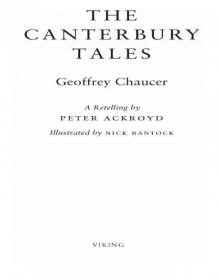 The Canterbury Tales
The Canterbury Tales J. M. W. Turner
J. M. W. Turner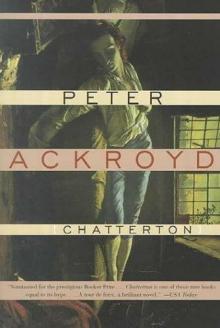 Chatterton
Chatterton The Canterbury Tales – A Retelling
The Canterbury Tales – A Retelling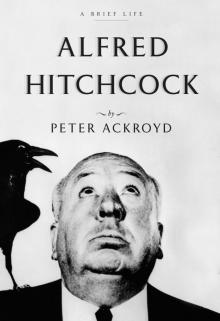 Alfred Hitchcock
Alfred Hitchcock Three Brothers
Three Brothers Wilkie Collins
Wilkie Collins Venice
Venice Poe
Poe The Lambs of London
The Lambs of London London
London Queer City
Queer City Revolution, a History of England, Volume 4
Revolution, a History of England, Volume 4 Venice: Pure City
Venice: Pure City Foundation
Foundation Thames
Thames The Plato Papers
The Plato Papers The house of Doctor Dee
The house of Doctor Dee Rebellion: The History of England from James I to the Glorious Revolution
Rebellion: The History of England from James I to the Glorious Revolution Albion: The Origins of the English Imagination
Albion: The Origins of the English Imagination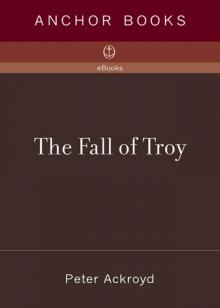 The Fall of Troy
The Fall of Troy The Death of King Arthur
The Death of King Arthur The Trial of Elizabeth Cree
The Trial of Elizabeth Cree London: The Biography
London: The Biography The Casebook of Victor Frankenstein
The Casebook of Victor Frankenstein Hawksmoor
Hawksmoor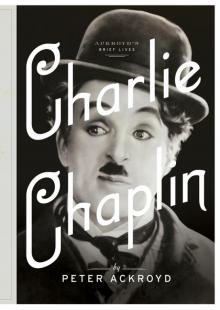 Charlie Chaplin
Charlie Chaplin London Under
London Under